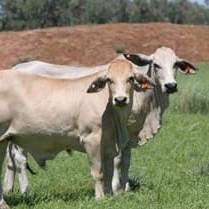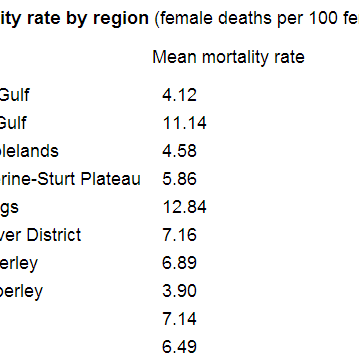 Wide variation in breeding cow mortality rates across northern cattle enterprises exposed in a recent study has highlighted the opportunities and strategies to reduce mortality performance, make production gains and advance animal welfare outcomes.
Wide variation in breeding cow mortality rates across northern cattle enterprises exposed in a recent study has highlighted the opportunities and strategies to reduce mortality performance, make production gains and advance animal welfare outcomes.
The Meat & Livestock Australia-sponsored analysis of northern breeder mortality rates examined performance across seven extensive grazing regions in northern Australia.
Forty five properties were randomly selected for the study, conducted by researchers, veterinarian, Alastair Henderson, and industry consultant, Steve Banney. The purpose was to gain a representative insight into how breeder cattle were being managed and to estimate individual stock losses using property records and simple data modelling.
Results showed a wide variation between properties and regions. Some of the higher mortality rates can be attributed to extreme weather events including floods and droughts, but what was also illustrated were the opportunities to lift production in the northern beef herd through management.
The analysis was carried out in terms of total breeders, with an assumption based on best estimates, of what the non-breeders might be, including heifer calves, heifers too young to join and spayed cows. The ‘breeder herd’ was the sum of all females on the property, minus those non-breeding females.
Regional rates and variations
The survey, conducted from 2008 to 2012, showed mean female mortality averaged 6.3 percent, and ranged from a low of 3.9pc in the WA West Kimberley region to 12.8pc in the Alice Springs region, for the same period.
The breeder mortality rates are likely to be somewhat higher than these values, however, as non-breeding females are not suffering as much nutritional stress or other risks associated with pregnancy and calving.
Individual properties in Queensland’s northern Gulf varied from 2.6pc to 19.6pc.

“Management of big properties in the Gulf in the early days of the study was characterised by big wet seasons, big droughts, late starts to the wet or early finishes to the wet, which can all have catastrophic consequences on the survival of the cattle,” Alistair Henderson said.
“The northern Gulf is not well-endowed country in terms of soil and pasture quality, but the fact that it delivered such widely contrasting results says there are significant differences in mortality performance,” he said.
“In the five-year span of the project, there were also periods of huge rainfall; big floods just drowned the country and the cattle.”
Many contributing factors
As part of the study, researchers analysed 22 different factors that might influence breeder mortality to identify significant and non-significant trends related to mortality.
The strongest statistical associations with mortality rate were:
- age of females at last joining, at last weaning and at culling
- wet season phosphorus supplementation of all females and of aged females
- dry season segregation of breeders, and
- continuous versus controlled mating.
Producers who culled at ten years of age or less had lower mortality rates than those who culled at older ages.
“It’s not difficult to reason why: their teeth wear out unless they’re on soft country – then with the stress of lactation and pregnancy – it all gets too hard,” Mr Henderson said.
Wet season phosphorus supplementation was also very important, especially of aged females, as was management of the mating period, with mortality rates in controlled-mating systems significantly lower than continuously-joined ones.
On some properties, it may be practical to implement a strategy of segregating the herd on the stage of gestation, Mr Henderson suggested. This would identify cows that are going to calve out-of-season which might need special assistance.
Some factors were not identified as being statistically significant due to the small sample involved.
For example, more than 90pc of the properties surveyed vaccinated at least some of their cattle against botulism, and there was a large reduction in female mortality when botulism vaccination was undertaken – regardless of whether part or the whole herd was treated.
However, the number of properties not vaccinating was insufficient to allow any meaningful association between vaccination and lower breeder mortality.
The researchers suggested that northern properties with breeder mortality rates above 8pc warrant management changes to try and reduce breeder stock losses.
“But it’s most important to go to a lot of trouble to ensure records such as cattle returns, paddock returns, mustering advices and monthly returns, are accurate,” Mr Henderson said.
“A lot of people in the survey did their best – even those with relatively small herds – and thought they had the job under control. But when we probed their answers, they found some records were missing or the data didn’t stack-up,” he said.
“If the information is only half-baked, any answers you get will also be half-baked.”
In line with that, one of the outcomes of the project was the development of a simple mortality calculator tool that allows producers to plug-in five or six sets of information and use an analytical formula to more accurately estimate their breeder mortality rate.
